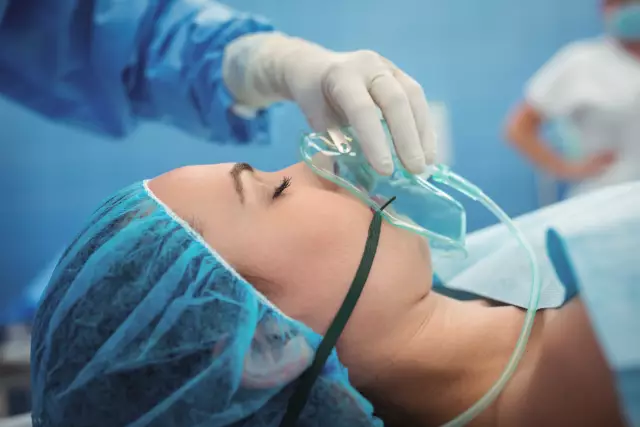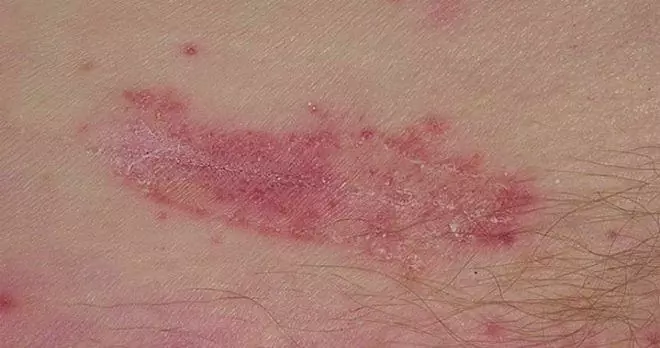- Author Rachel Wainwright [email protected].
- Public 2023-12-15 07:39.
- Last modified 2025-11-02 20:14.
9 myths about skin cancer: common misconceptions you shouldn't believe
To date, scientists have no unequivocal opinion regarding the direct cause of skin cancer. Only the factors contributing to the development of this disease have been precisely established. These include long-term exposure to the skin of ultraviolet rays, radiation exposure, thermal injuries, damage to the skin by aggressive chemicals (resins, acids, alkalis, etc.), hereditary predisposition (the presence of malignant skin neoplasms in a family history), taking medications, suppressing immunity, mechanical damage to moles (nevi) and birthmarks.

Source: depositphotos.com
Despite the widespread occurrence of skin cancer (diseases of this type account for about half of the cases of cancer in the world), most people have little idea of the specifics of the disease and how to prevent it. Many everyday ideas about skin cancer have nothing to do with reality. Consider some of the most famous misconceptions.
Skin cancer only affects the elderly
About 50-70 years ago, this statement reflected a real situation, but since then, skin cancer has become very "younger". Now it ranks first among cancers diagnosed in people 26-30 years old, and second among malignant neoplasms that are observed in boys and girls aged 15 to 25 years.
Some experts believe that the prevalence of skin cancer among young people is influenced by such a factor as the increased availability of travel to hot countries, including for the purpose of a beach holiday. On such trips, people whose bodies are not genetically programmed for such loads receive a huge amount of ultraviolet radiation, which, in combination with sea water, which dries out the skin, becomes the main risk factor for the development of a tumor.
Artificial insolation is safer for the skin than the sun's rays
This highly dangerous misconception may also be responsible for the rise in skin cancer incidence among young people. The fact is that, unlike natural insolation, the effect created by artificial installations consists of 98% of the spectrum of UV rays that is dangerous for the skin. Solarium lovers who receive artificial sunbathing regularly are especially at risk. It has been proven that such procedures, performed once a month for ten years, increase the likelihood of skin cancer by 50%. Even a single visit to the tanning salon can be dangerous if the person has other risk factors.
Skin cancer is incurable
This is not true. As with most cancers, the likelihood of a cure for skin cancer is in direct proportion to how quickly treatment is started. Melanomas and basaliomas, diagnosed at an early stage, are completely eliminated in 98% of cases. In relation to formations diagnosed at later stages of development, the probability of cure decreases to 70-75%, which, however, is also a fairly high indicator.
Melanoma is necessarily accompanied by a modification of moles
In four out of five cases, melanoma does not arise from reborn moles, but on areas of the skin free from them. However, it is believed that the presence of a large number of nevi doubles the risk of developing malignant neoplasms of the skin. Therefore, people with such a feature should periodically examine their moles, identifying changes in their size, shape, color, surface nature and other parameters.
To avoid trouble, you must regularly visit a dermatologist. In this case, it is very important that the patient belonging to the risk group is constantly monitored by the same doctor. Frequent change of doctors can lead to the fact that changes in nevuses go unnoticed.
Removal of all moles eliminates the development of skin cancer
Removing nevi to avoid skin cancer is pointless. Operations of this kind do not reduce the risk of developing the disease, and they should be carried out exclusively on the recommendation of a doctor.
Sunscreens trigger the development of melanoma
A means of protection against solar insolation should be selected correctly. It should match the skin phototype and not trigger allergic reactions. However, even a not entirely successful choice of cream does not carry the risk of developing skin cancer. Of course, we are not talking about dubious products, in which unscrupulous manufacturers often include chemical ingredients hazardous to health (including those without state certification). Sunscreens purchased from reputable suppliers are usually harmless.
Another important aspect of UV protection is the correct use of cosmetics. It should be remembered that no sunscreen lasts longer than two hours, while it blocks up to 90% of radiation hazardous to the skin. This is why you shouldn't count on reliable protection all day long if you apply the cream to your skin once in the morning.
People who never get sunburn do not get skin cancer
The body's ability to produce a dark pigment that protects against insolation is developed in humans to varying degrees. Those whose skin is lighter in color have a very high risk of sunburn, which really increases the likelihood of developing malignant neoplasms in the future. However, having dark skin that does not burn does not guarantee that a person will never get cancer. Ailments of this type are diagnosed in every country in people belonging to almost all ethnic groups.

Source: depositphotos.com
No need for sun protection in cloudy weather
Clouds trap much of the sun's thermal energy, but they are transparent to UV rays. Therefore, it is necessary to apply sunscreen to open skin areas in any weather.
Laser removal of moles is preferable to surgical
We have already said that only those moles that the dermatologist considered suspicious should be removed. In this case, the operation using a laser has only one advantage: after it there are no cosmetic defects. From the point of view of maintaining health, laser removal of a nevus may turn out to be not only useless, but also dangerous, since it completely excludes the possibility of tissue sampling for subsequent research. This means that it will no longer be possible to determine whether a removed birthmark has undergone a rebirth, and the person will not receive the necessary treatment on time.
According to the recommendations of WHO experts, any nevus that is removed on suspicion of pathological changes should be surgically excised with the subsequent transfer of the material to a histological laboratory.
Skin cancer is considered one of the most easily preventable cancers. It is enough that the first signs of the disease can be seen visually. Suspicious formation is easily and quickly removed, and histological examination allows you to immediately draw a final conclusion about its nature and prescribe adequate treatment. In addition, much depends on the person himself: the action of most risk factors can be minimized. You just need to behave correctly (use protective equipment, do not get carried away with sunbathing, avoid contact with hazardous chemicals, etc.), as well as be regularly examined and follow the advice of a dermatologist. This will help reduce the likelihood of developing an ailment, and if it occurs, heal.
YouTube video related to the article:

Maria Kulkes Medical journalist About the author
Education: First Moscow State Medical University named after I. M. Sechenov, specialty "General Medicine".
Found a mistake in the text? Select it and press Ctrl + Enter.






